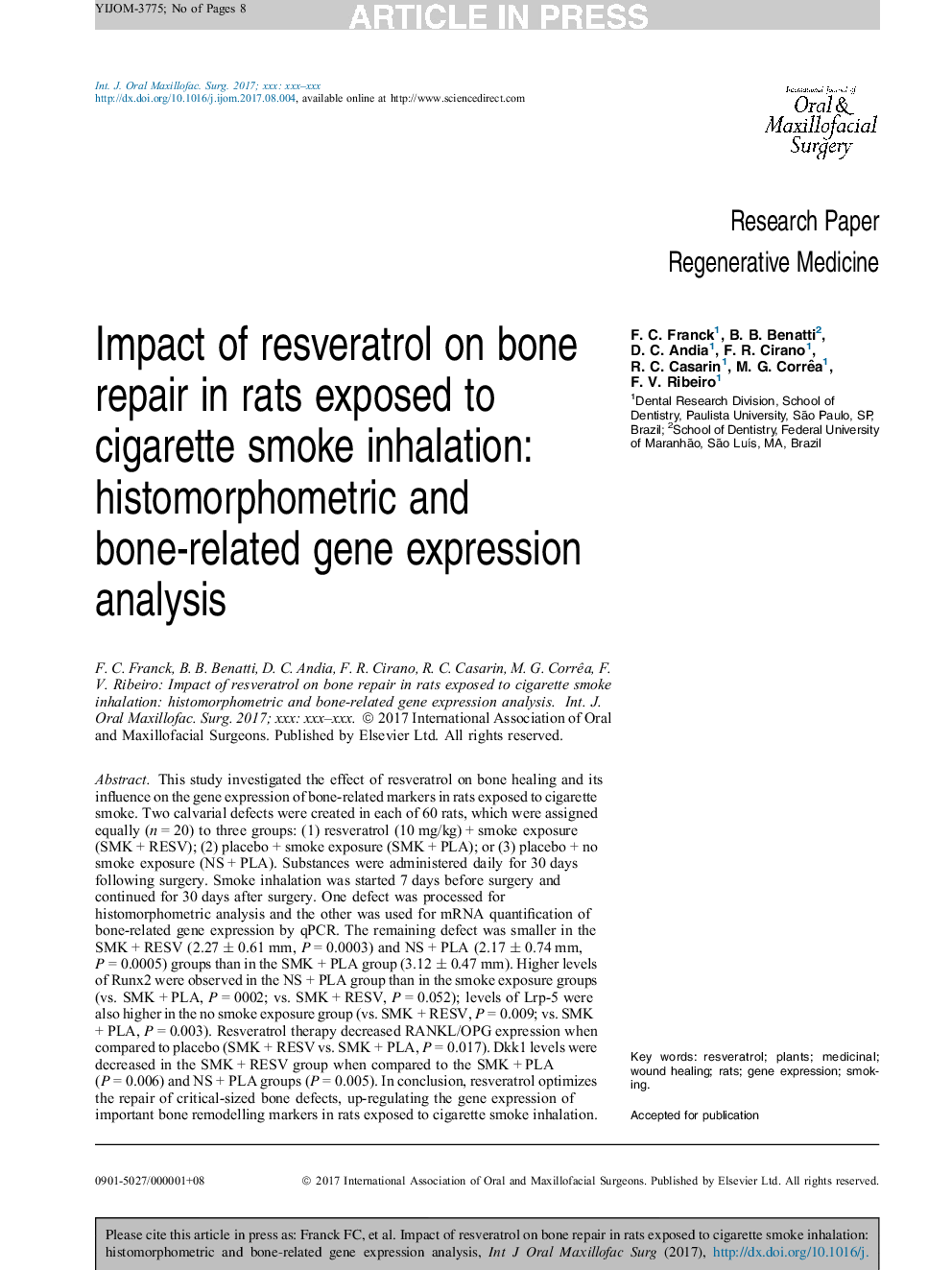| Article ID | Journal | Published Year | Pages | File Type |
|---|---|---|---|---|
| 8697851 | International Journal of Oral and Maxillofacial Surgery | 2018 | 8 Pages |
Abstract
This study investigated the effect of resveratrol on bone healing and its influence on the gene expression of bone-related markers in rats exposed to cigarette smoke. Two calvarial defects were created in each of 60 rats, which were assigned equally (n = 20) to three groups: (1) resveratrol (10 mg/kg) + smoke exposure (SMK + RESV); (2) placebo + smoke exposure (SMK + PLA); or (3) placebo + no smoke exposure (NS + PLA). Substances were administered daily for 30 days following surgery. Smoke inhalation was started 7 days before surgery and continued for 30 days after surgery. One defect was processed for histomorphometric analysis and the other was used for mRNA quantification of bone-related gene expression by qPCR. The remaining defect was smaller in the SMK + RESV (2.27 ± 0.61 mm, P = 0.0003) and NS + PLA (2.17 ± 0.74 mm, P = 0.0005) groups than in the SMK + PLA group (3.12 ± 0.47 mm). Higher levels of Runx2 were observed in the NS + PLA group than in the smoke exposure groups (vs. SMK + PLA, P = 0002; vs. SMK + RESV, P = 0.052); levels of Lrp-5 were also higher in the no smoke exposure group (vs. SMK + RESV, P = 0.009; vs. SMK + PLA, P = 0.003). Resveratrol therapy decreased RANKL/OPG expression when compared to placebo (SMK + RESV vs. SMK + PLA, P = 0.017). Dkk1 levels were decreased in the SMK + RESV group when compared to the SMK + PLA (P = 0.006) and NS + PLA groups (P = 0.005). In conclusion, resveratrol optimizes the repair of critical-sized bone defects, up-regulating the gene expression of important bone remodelling markers in rats exposed to cigarette smoke inhalation.
Related Topics
Health Sciences
Medicine and Dentistry
Dentistry, Oral Surgery and Medicine
Authors
F.C. Franck, B.B. Benatti, D.C. Andia, F.R. Cirano, R.C. Casarin, M.G. Corrêa, F.V. Ribeiro,
